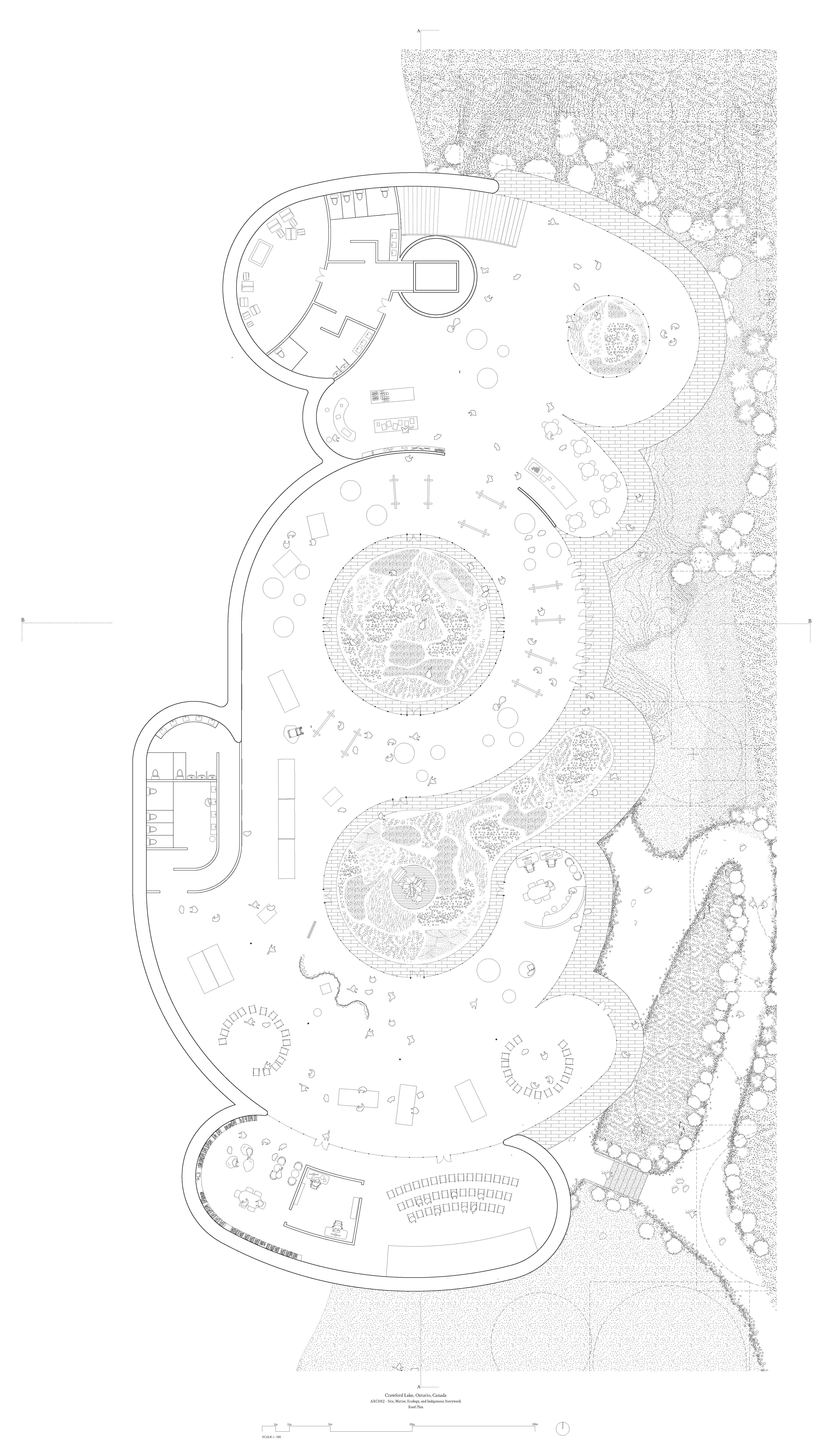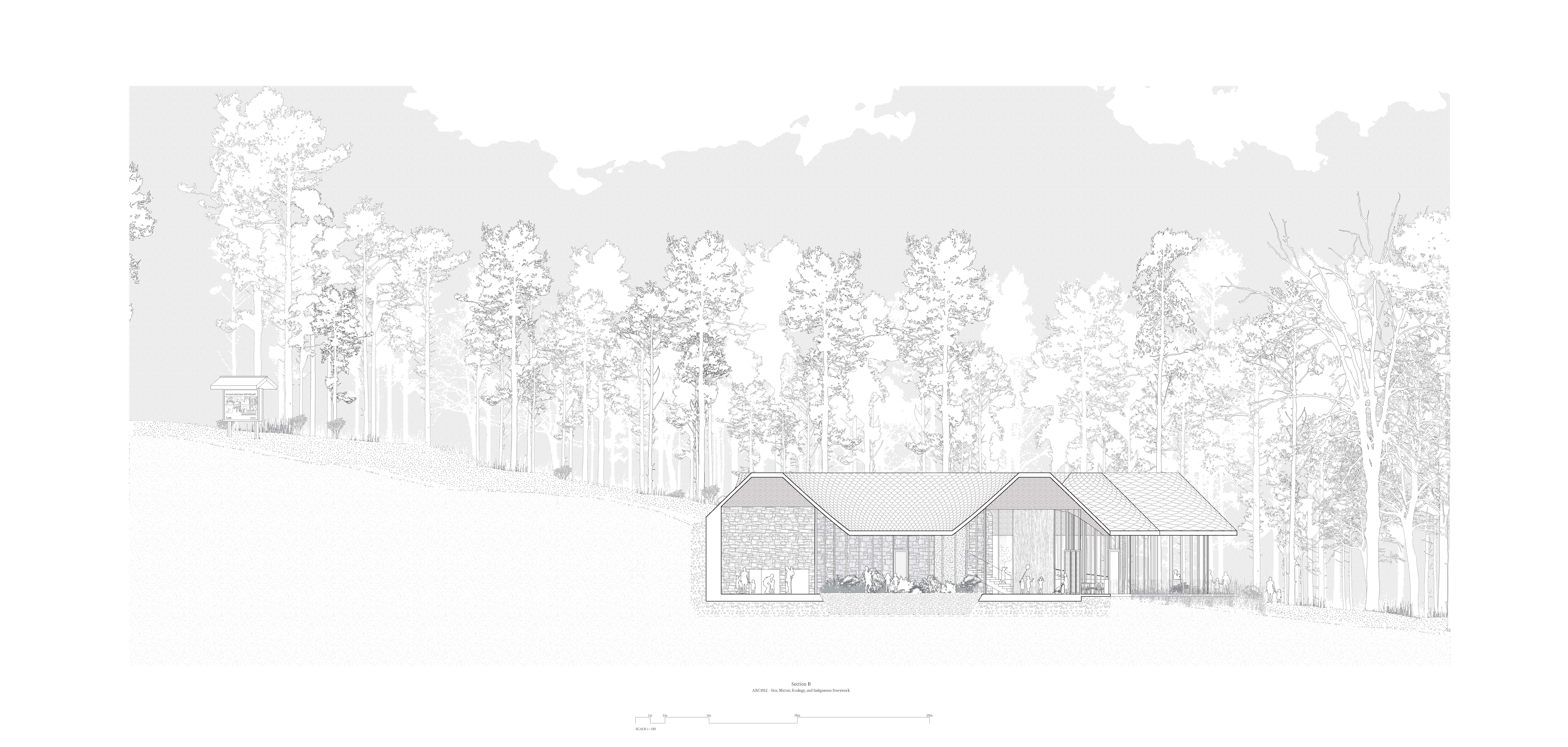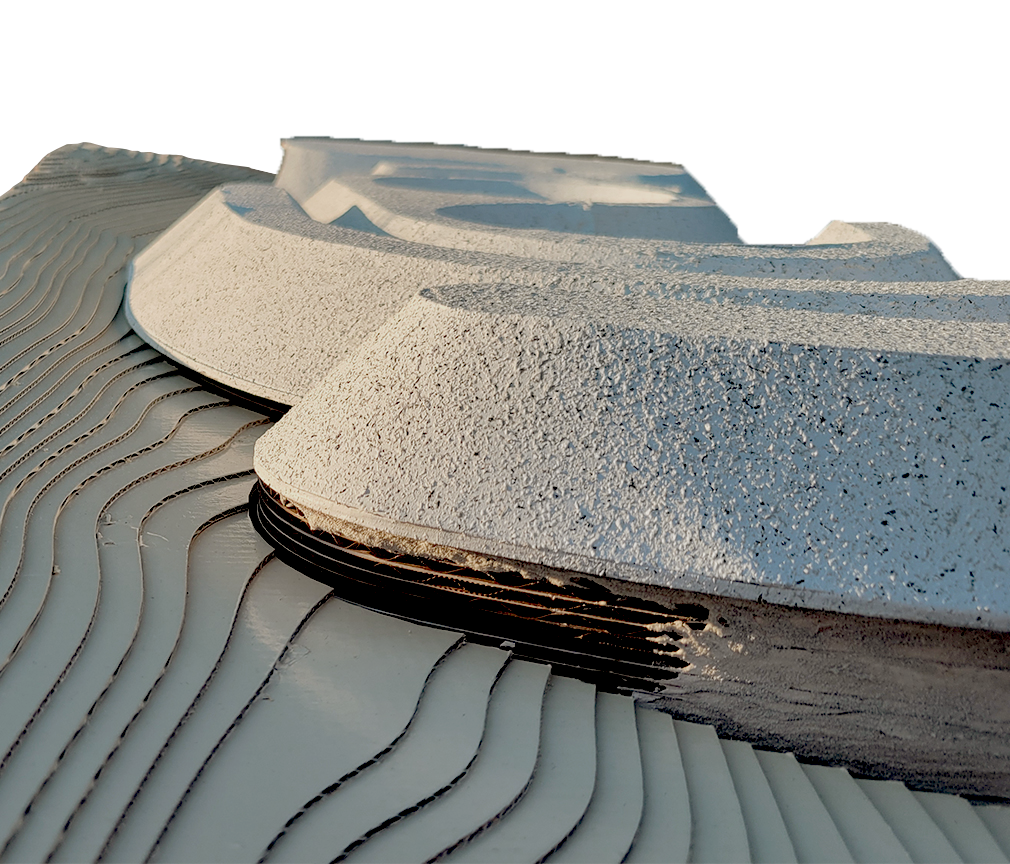site, matter, & ecology




This project is one that has proved challenging, both
technically and in the conceptual rigor that we’ve been working through all
year. The process of decolonizing our perceptions and preconceived notions of
what a museum is spatially and philosophically is not a process that can be
addressed in one architecture school studio. So, for this project I chose to
stick to a few core modes to design within, geometric, materially, and in the
relationship between the building and the site and ecology.
One of my first points of reference is rooted in our site visit to Crawford Lake. I was struck by the material palette presented by the forest of the site, that being the relationship between the stone present in the site and the trees growing amongst and on those stones. I sought to bring those elements into the building’s experiential qualities, both in the interior and exterior. This is seen in the stone retaining wall that stretches the entire length of the west side of the structure, joining the land that the building is cut into with the stone of the site and then the interior within. From the outside, the roof is clad in stone tiles further accentuating this relationship. The connection between the ecology of the site and building is put to the forefront with this material and structural system. The forest is represented in the verticality of the wood mullions forming the east glass façade. This material choice of glazing the entire east face of the building brings the edge of the forest into the structure.
An important reference for the geometric form of the structure is a diagram from The Clay We Are Made Of : Haudenosaunee Land Tenure on the Grand River that shows the societal spheres of Haudenosaunee culture(figure 1). This diagram shows what Haudenosaunee social organization is structured as. In my initial iterations for this project, I was imagining the building as a series of pavilions with determined programs that corresponded to social uses. I then further developed this to be more inclined to the concentric relationships seen in this diagram. The centers of the courtyards in building are representative of “fire/family” and “gardens/fields”. Moving out from that is a combination of “non-Haudenosaunee neighbours” in the gallery space and open museum spaces, as well as the periphery of the building representing the “edge of the woods” and then the forest itself at the edge of this being the “forest/hunting grounds”. The concentric circular forms of the structure form a referential concept of this diagram, and the programming of these spaces fills out the reality of this. The aspect of moving towards a decolonized museum and gallery is also seen in these concentric circular geometries. The space is organized to be flexible and open to accommodate moving in and out artifacts and art in a way that allows interaction and open learning environments around the objects. From what I learned from our First Peoples Advisors, one of the most important aspects of indigenous peoples relationships to museums is access and flexibility to objects. They are not necessarily things to be behind glass and out of touch with the communities that they come from. They are things that need to be touched and experienced and that have lives and energy within them. The open organization of the space allows an increased degree of this concept.
One of my first points of reference is rooted in our site visit to Crawford Lake. I was struck by the material palette presented by the forest of the site, that being the relationship between the stone present in the site and the trees growing amongst and on those stones. I sought to bring those elements into the building’s experiential qualities, both in the interior and exterior. This is seen in the stone retaining wall that stretches the entire length of the west side of the structure, joining the land that the building is cut into with the stone of the site and then the interior within. From the outside, the roof is clad in stone tiles further accentuating this relationship. The connection between the ecology of the site and building is put to the forefront with this material and structural system. The forest is represented in the verticality of the wood mullions forming the east glass façade. This material choice of glazing the entire east face of the building brings the edge of the forest into the structure.
An important reference for the geometric form of the structure is a diagram from The Clay We Are Made Of : Haudenosaunee Land Tenure on the Grand River that shows the societal spheres of Haudenosaunee culture(figure 1). This diagram shows what Haudenosaunee social organization is structured as. In my initial iterations for this project, I was imagining the building as a series of pavilions with determined programs that corresponded to social uses. I then further developed this to be more inclined to the concentric relationships seen in this diagram. The centers of the courtyards in building are representative of “fire/family” and “gardens/fields”. Moving out from that is a combination of “non-Haudenosaunee neighbours” in the gallery space and open museum spaces, as well as the periphery of the building representing the “edge of the woods” and then the forest itself at the edge of this being the “forest/hunting grounds”. The concentric circular forms of the structure form a referential concept of this diagram, and the programming of these spaces fills out the reality of this. The aspect of moving towards a decolonized museum and gallery is also seen in these concentric circular geometries. The space is organized to be flexible and open to accommodate moving in and out artifacts and art in a way that allows interaction and open learning environments around the objects. From what I learned from our First Peoples Advisors, one of the most important aspects of indigenous peoples relationships to museums is access and flexibility to objects. They are not necessarily things to be behind glass and out of touch with the communities that they come from. They are things that need to be touched and experienced and that have lives and energy within them. The open organization of the space allows an increased degree of this concept.
Hill, Susan M.The Clay We Are Made Of : Haudenosaunee Land Tenure on the Grand River. Winnipeg: University of Manitoba Press, 2017.










